Everything You Need to Know About Katana Swords
What is katana
The Katana is a classic Japanese sword that’s instantly recognizable. With its curved, slim blade, sharp single edge, and long handle for two-handed use, it’s built for fast, precise strikes. The blade is tough yet flexible, thanks to a forging process that folds the steel multiple times. This gives it the perfect balance of strength and sharpness. Simple, sharp, and powerful—that’s the Katana.
The History Of Katana
The Katana’s history began during Japan’s Heian period (794–1185), when curved blades first appeared, primarily designed for mounted warriors. These early swords, called tachi, were long and curved, suitable for slashing from horseback.
In the Kamakura period (1185–1333), warfare shifted to ground battles, leading to the development of a shorter, more maneuverable blade. This design became the foundation of the Katana, allowing quick, precise strikes in close combat.
By the Muromachi period (1336–1573), the Katana had fully evolved into its recognizable form. Its curved blade, single edge, and two-handed grip made it both effective and versatile. During this time, samurai adopted the daisho pairing—a Katana and a shorter wakizashi—as their standard weapon set.
In the Edo period (1603–1868), as peace settled across Japan, the Katana shifted from a battlefield weapon to a status symbol. Swordsmiths focused on refining craftsmanship, perfecting the blade for ceremonial and symbolic purposes rather than war.
Today, the Katana is recognized as a historical artifact. From combat to cultural heritage, its journey reflects centuries of adaptation and tradition.
How is a Katana Made
A Katana’s construction consists of three main parts: the Kissaki, which is the tip of the blade designed for precision and piercing; the Shinogi, or ridge line, which adds strength and defines the blade’s geometry; and the Blood Groove (Bo-hi), a channel that reduces the blade’s weight while maintaining its durability.
Material Selection: Traditional Tamahagane steel is chosen and sorted by carbon content. High-carbon steel forms the sharp, hard edge, while low-carbon steel provides flexibility.
Forging: The steel is heated, folded, and hammered repeatedly to remove impurities and strengthen the blade.
Shaping: The blade’s iconic curved form takes shape during the cooling process.
Polishing: The blade is polished with stones of varying grit, enhancing its sharpness and revealing fine details.
Assembly: Handcrafted components like the handle (Tsuka), guard (Tsuba), and scabbard (Saya) complete the Katana.
What Should Be Considered When Buying a Katana
1. Blade Material
The material directly affects the Katana’s performance. Most functional Katanas are made from carbon steel, with T10 and 1060 steel being popular choices. T10 is known for its hardness and edge retention, while 1060 balances strength and flexibility.
2.Construction
Pay attention to whether the blade is full tang. A full-tang blade extends through the handle, ensuring durability and balance. Avoid rat-tail tang blades, as they’re more prone to breaking under stress.
3. Craftsmanship and Details
Look at the hamon (temper line) on the blade, which shows how it was tempered. Authentic Katanas feature a natural hamon, while decorative ones might have a fake, etched line. Also, check the tsuka (handle) wrapping for tightness and durability.
4. Weight and Balance
A good Katana should feel balanced in your hands. Too heavy, and it’s hard to control; too light, and it may lack cutting power.
5. Budget
Quality comes at a price. Functional Katanas can range from $200 to over $1,000.
6. Aesthetic Design
Consider the overall look, including the blade finish, the tsuba (guard) design, and the scabbard (saya). High-quality finishes and intricate designs add value and visual appeal.
At KatanaLand, we take pride in offering expertly crafted Katanas that blend tradition, quality, and design. Each blade is carefully selected to meet your needs, whether for practice, collection, or display. With our dedication to authenticity and detail, finding your perfect Katana has never been easier.
Do Katanas Break Easily
Katanas are built to be strong and flexible, with a sharp edge for cutting and a softer spine for durability. When made well and used properly, they’re pretty tough and don’t break easily. That said, some factors can make a Katana more likely to get damaged.
- Cheap Materials: Low-quality steel or poorly made blades are the main culprits. Mass-produced, decorative Katanas aren’t designed for real use and can easily chip or snap.
- Bad Construction: A blade that doesn’t have a full-tang design (where the blade extends fully into the handle) won’t hold up under stress. These weaker builds can break during heavy use.
- Too Hard, Too Brittle: If the steel is overly hardened, it may be sharp but also more likely to crack or break with impact.
- Wrong Use: Katanas are made for cutting softer targets like bamboo or practice mats. Hitting hard surfaces like metal, stone, or thick wood can cause chips or even cracks.
- Neglect: Skipping maintenance—like cleaning, oiling, or proper storage—can lead to rust. Once a blade rusts or weakens, it’s much more likely to break under pressure.
How to Care for Your Katana
Taking care of your Katana ensures it stays in top condition for years to come. Regular maintenance is key. After each use, clean the blade with a soft, lint-free cloth to remove fingerprints, dirt, or moisture. Apply a thin layer of blade oil, like choji oil, to prevent rust. Always store your Katana in its scabbard (saya), but make sure the blade is completely dry before doing so.
Avoid touching the blade with bare hands, as oils from your skin can cause corrosion. If the blade gets dirty, use a proper cleaning kit, including powder balls (uchiko) and a soft cloth, to clean and re-oil it. For long-term storage, check your Katana periodically to ensure it’s free of rust or damage.
FAQs
Is a katana sword illegal?
The legality of owning a katana varies by country. In the U.S., they’re generally legal to own, though some states may regulate carrying them openly. In the UK, Japan, and Australia, owning katanas is allowed, but there are restrictions on how and where they can be used or displayed.
How much is a real katana worth?
An authentic katana can range from a few hundred to thousands of dollars. Mass-produced katanas are generally cheaper, while traditional, hand-forged katanas made by expert craftsmen in Japan can easily exceed $10,000. The quality, age, and maker impact the price.
What is the difference between a katana and a samurai sword?
The term “samurai sword” often refers to any sword used by samurai, including katanas, wakizashis, and tantos. A katana is a specific type of Japanese sword known for its curved, single-edged blade and a two-handed grip. It’s famous for its cutting ability and iconic shape.
What are katanas good for?
Katanas excel in cutting precision and speed, making them ideal for martial arts like Kenjutsu and Iaido. With their sharp edge and balanced design, katanas perform best in swift, slashing movements. They’re admired for their craftsmanship, symbolizing honor and skill in Japanese culture.
Best Katana Swords by KatanaLand.com
-
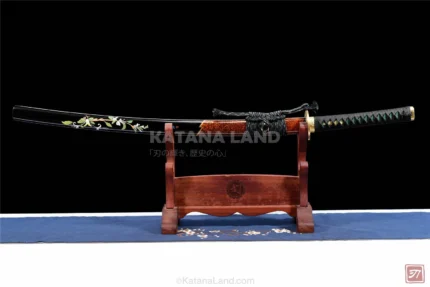 Aoi Katana$440.00
Aoi Katana$440.00 -
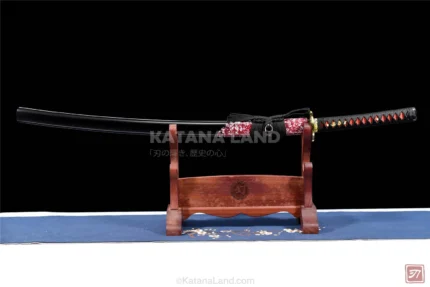 Akai Hoko Katana$270.00
Akai Hoko Katana$270.00 -
 Blue Demon Katana$730.00
Blue Demon Katana$730.00 -
 Akazome Sakura no Yoto Katana$300.00
Akazome Sakura no Yoto Katana$300.00 -
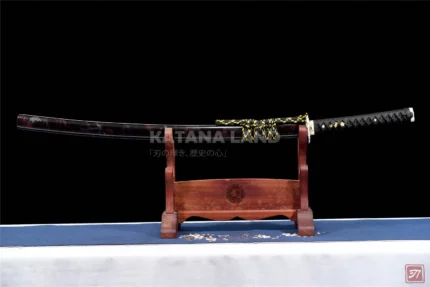 Aoi Yurei Katana$240.00
Aoi Yurei Katana$240.00 -
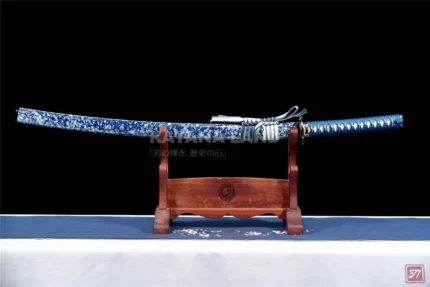 Aoi Kinsuke Katana$360.00
Aoi Kinsuke Katana$360.00 -
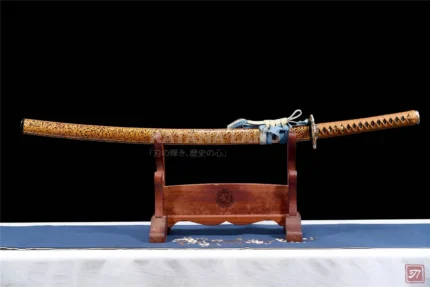 Aoshi Kyuchoten Katana$730.00
Aoshi Kyuchoten Katana$730.00 -
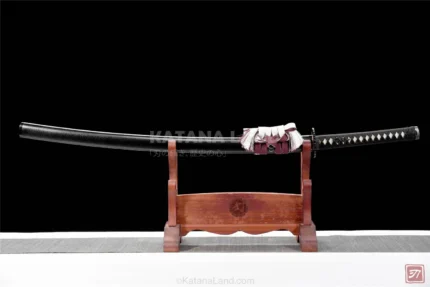 Akaketsu Shou Katana$740.00
Akaketsu Shou Katana$740.00 -
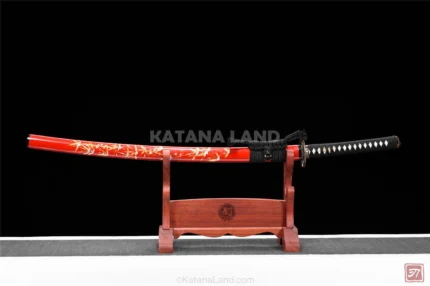 Bamboo Harmony Katana$1,240.00
Bamboo Harmony Katana$1,240.00 -
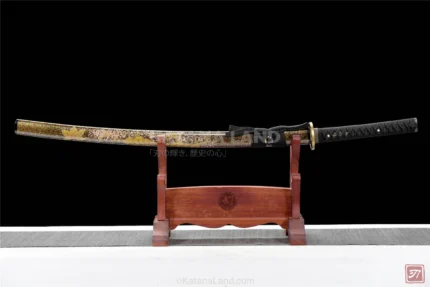 Agarwood Katana$300.00
Agarwood Katana$300.00 -
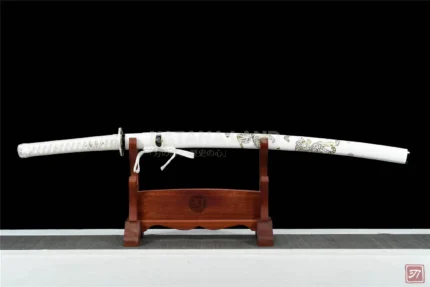 Beast King Conquest Katana$320.00
Beast King Conquest Katana$320.00 -
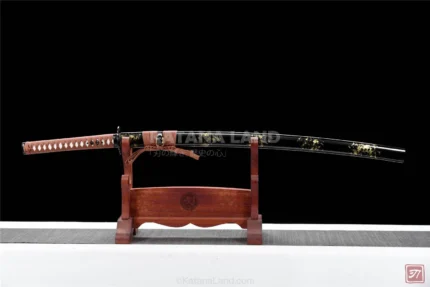 Choko Katana$230.00
Choko Katana$230.00
